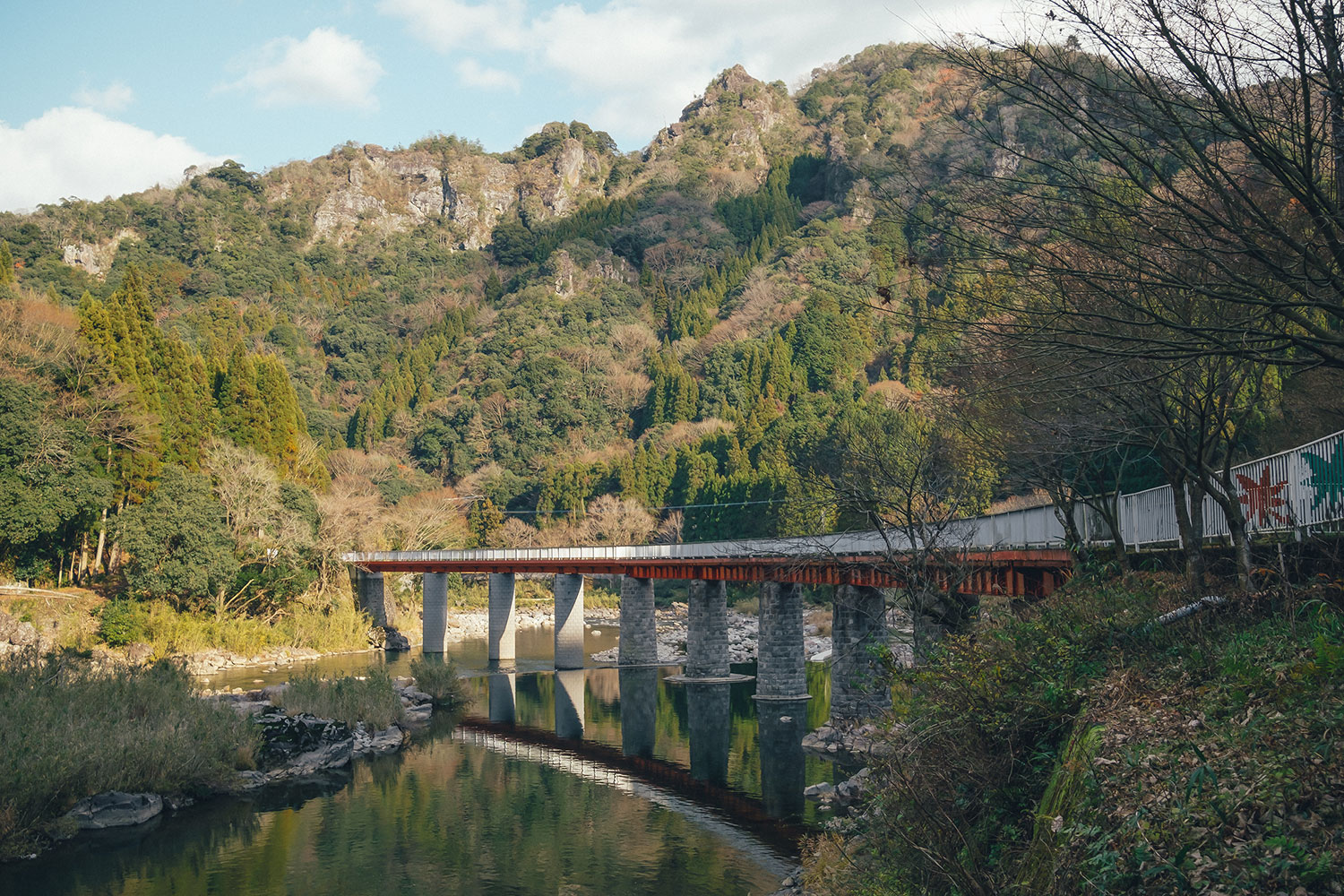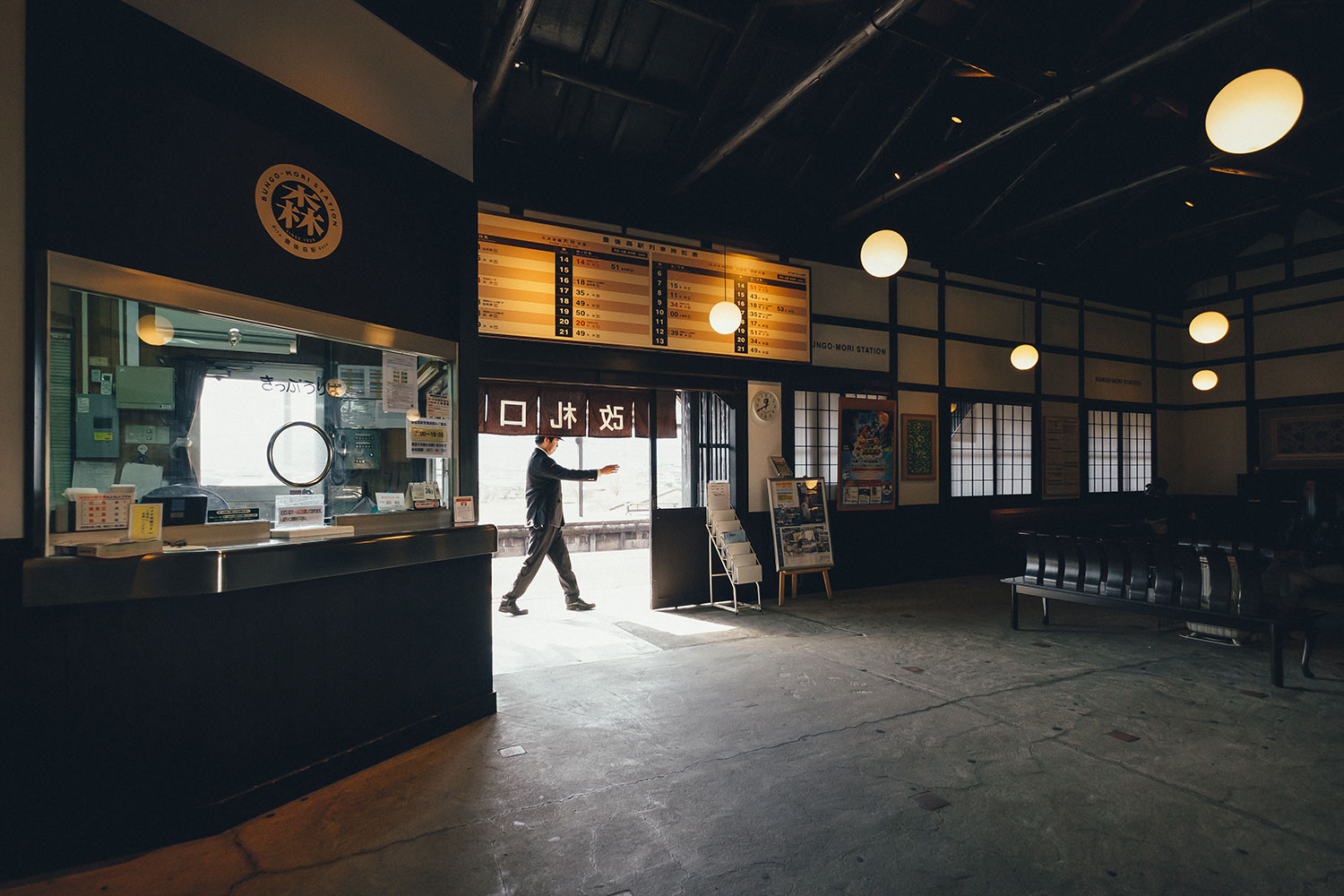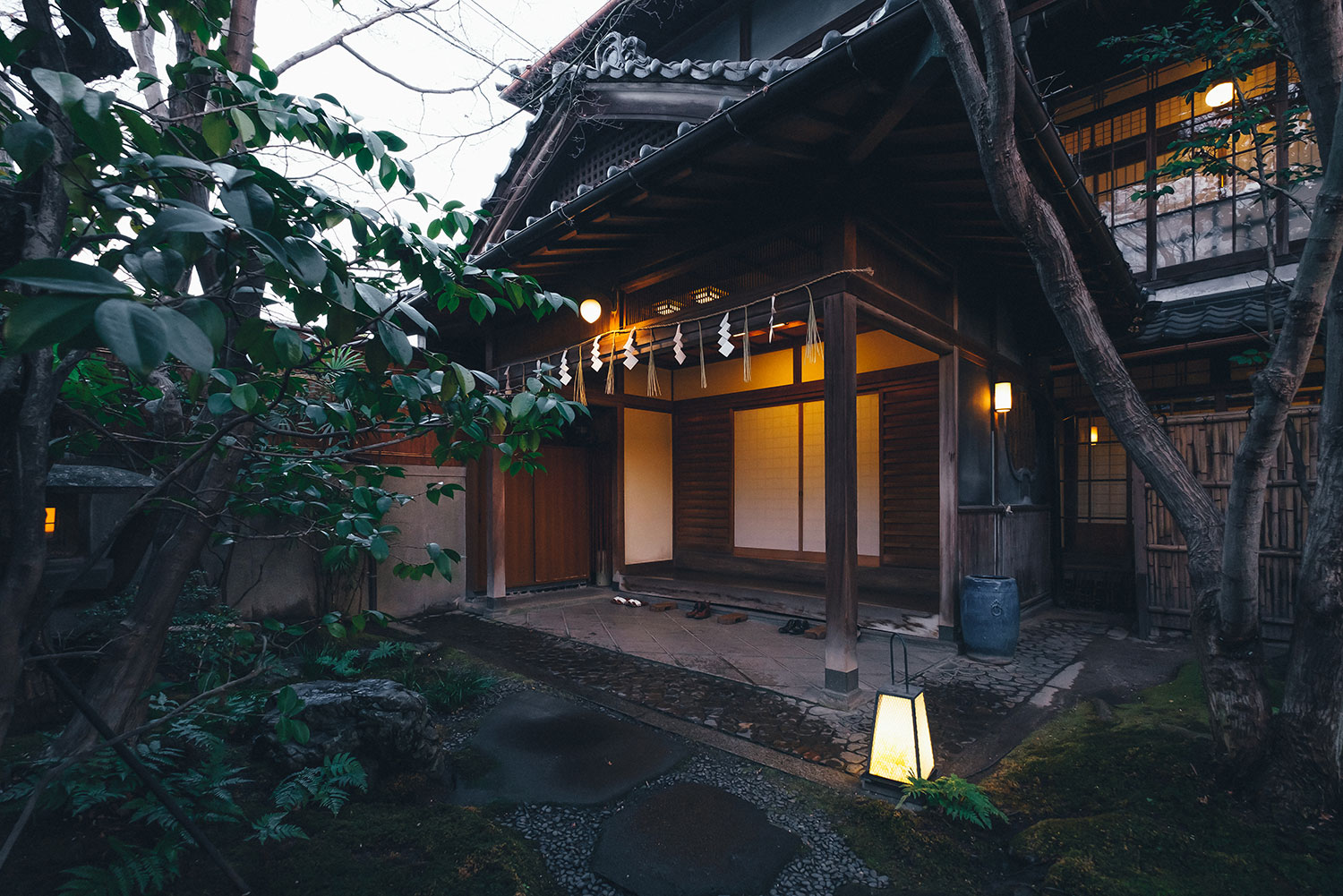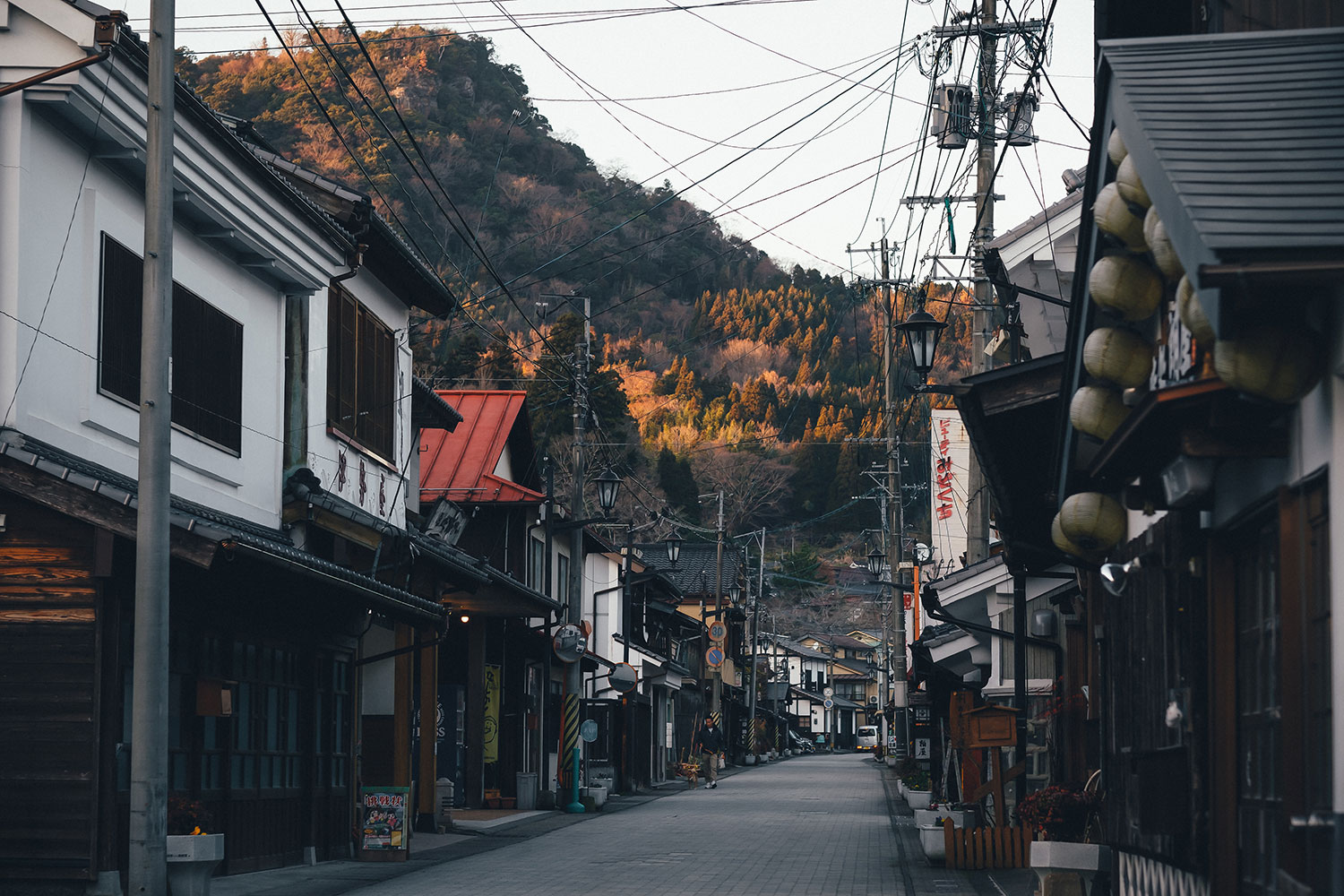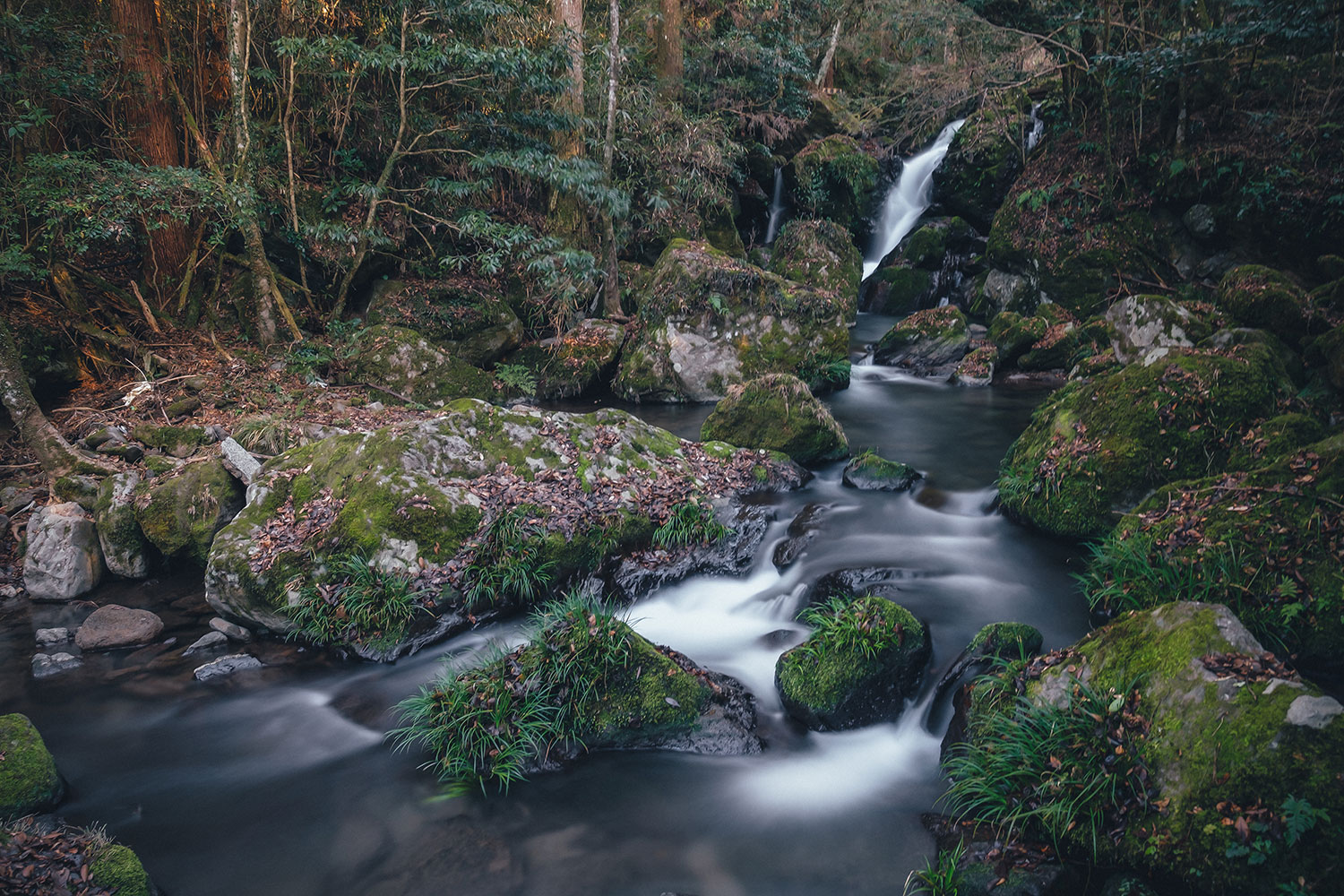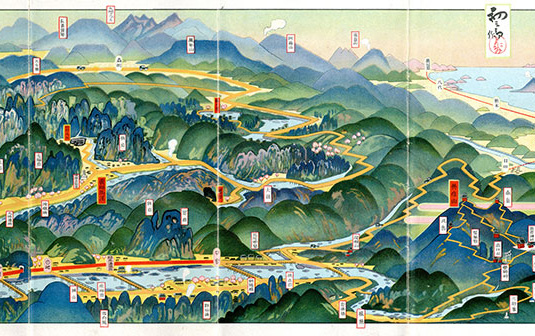
吉田初三郎が描いた鳥瞰図ー天下無二耶馬全渓の交通絵図ー
大正時代から昭和初期、急激に拡大した交通網は遠くへの移動を容易にしました。人々の動きは活発になり、大観光時代の幕が開けました。人々は、鉄道、自動車、乗り合い馬車で水墨画に描かれた耶馬溪を訪れ、リアルな山水絵巻に入り込んでいきます。
絶景の中、岩をつたって神仏に会い、山を越え渓谷に分け入って風景や庭園を愛でる、そんな「やばけい遊覧」は評判となり、人々は奇岩の景勝地に憧れの耶馬渓を重ね、全国に「耶馬渓」の名をもつ景勝地が生まれていったのです。
鉄橋跡を利用したサイクリングロード
豊後森駅
大正2年に開業した耶馬渓鉄道は、中津駅から山国川源流の地、山国町へ客を運びました。紅葉のシーズンともなると、県外からの臨時の観光列車が増便されるほどの人気ぶりでした。
昭和4年には玖珠町の豊後森駅が開業し、耶馬渓の南の玄関口となりました。こうして、中津から玖珠へ、玖珠から中津へ、耶馬溪をめぐる観光ルートが確立しました。当時を知る豊後森の駅舎。耳を澄ますと耶馬溪観光が華やかなりし日のざわめきが聞こえてきます。
当時の人の旅の拠点ー筑紫亭ー
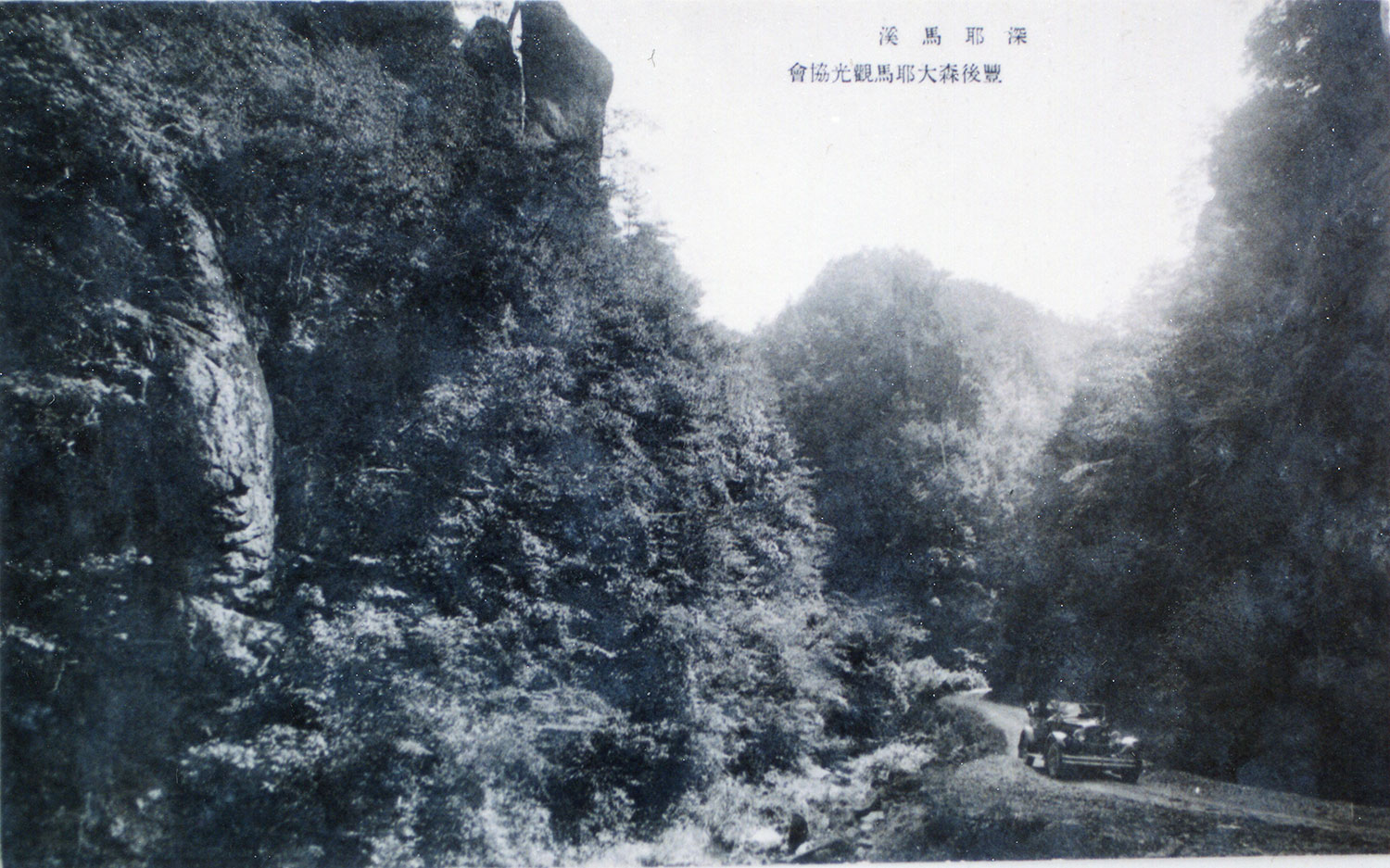
当時の移動手段ー乗り合い自動車ー
耶馬渓を目指し駅に降り立った旅人は、まずは旅館で山海の珍味に舌鼓をうち、酒に興じて筆をとりました。筑紫亭のお座敷に残された書画や、風雅な茶室、ほのかな灯りに包まれる庭・・文化人たちの語らいが聞こえてきます。
駅を出発する乗合い自動車は、これまで行くことのできなかった耶馬渓の奥地へ旅人を運びます。くねくねとした谷筋を進む車窓からの眺め。切り立つ岸壁や奇岩の数々が絵巻をひもとくように次から次へと姿をあらわします。
旧豊後森機関庫
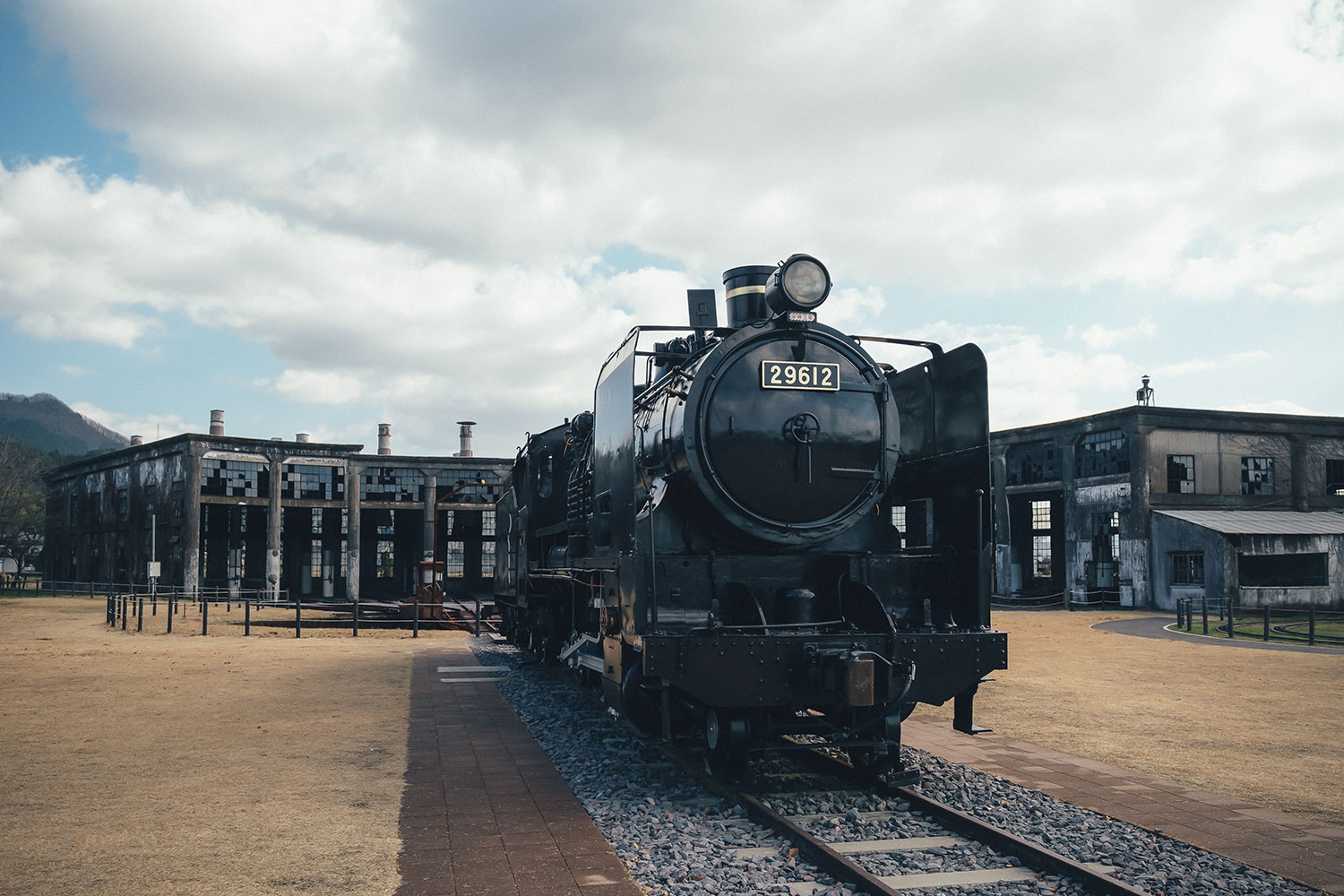
豊後森機関庫公園
玖珠町には旅人を誘った機関車がしばし休憩する扇形の機関庫がその役目を終え静かに時を刻んでいます。機関車たちを毎日見送り、出迎えた機関庫は、戦時下、米軍の機銃掃射を受けその身体に無数の銃弾の痕が残りました。
耶馬渓観光に向かう旅人たちの楽しげな姿を、声を、機関庫は今も覚えています。そして、新たな観光の伊吹を感じ取っています。
玖珠の森城下町
清水瀑園
耶馬渓観光の出入口として栄えた玖珠の森城下町。旅人を迎え、旅人を送る、100年続く建物が並ぶ町並みが当時の風景を語ります。
大正時代のおわり、文豪の田山花袋(※1)と画家の小杉放庵(※2)は、中津から玖珠へ自動車に乗り、当時最先端の旅をしました。そして彼らはストーリーと詩、イラストで「耶馬溪紀行」を著し、豊かな旅を表現しました。「森谷の奥に滝あり紅葉あり、いざ来りませわれしるべせん」。花袋はあなたを「やばけい遊覧」の旅へ誘っています。
※1:田山花袋(たやまかたい)= 1872-1930 小説家。代表作「蒲団」「田舎教師」など自然主義派の作品のほか、紀行文も得意としており、大正15年に小杉放菴と耶馬渓を旅し「耶馬溪紀行」を記した。 ※2:小杉放庵(こすぎほうあん)=
1881-1964 画家。小杉未醒ともいう。代表作には東大安田講堂の壁画がある。耶馬渓を何度も訪れ絵を描き残している。
Next property
Other content
Creating a Sightseeing Area

The Bird’s Eye View Drawn by Yoshida Hatsusaburo – Tenka Muni Yabazenkei Transportation Drawing –
From the Taisho Period until the beginning of the Showa Era, a rapidly expanding transportation network made travel to distant places simple. People became more mobile, and the curtain opened on a great sightseeing era. People visited the Yabakei depicted in ink paintings by railway, automobile, and stagecoaches and stepped into a living shan sui emaki
scroll. Within this picturesque scenery, people walked along the rocks to meet with gods and buddhas and crossed mountains and pushed their way through valleys to admire scenery and gardens. This sort of “Yabakei Sightseeing” gained popularity, and people overlapped the Yabakei of their dreams onto scenic locations with strange rock formations, causing scenic spots with the name of “Yabakei” to be born all over the country.
A Cycling Road Making Use of the Remnants of a Railway Bridge
Bungo-Mori Station
The Yabakei Railway opened for business in Taisho year 2 (1913) and carried passengers from Nakatsu Station to the source of the Yamakuni River, Yamakuni-machi. It was so popular that temporary extra sightseeing trains had to be brought in from outside the prefecture during the fall leaves season. In Showa year 4 (1929), Bungo-Mori Station was opened in Kusu-machi and became the entranceway to Yabakei from the south. In this way, sightseeing routes were established to travel through Yabakei from Nakatsu to Kusu and from Kusu to Nakatsu. The station building at Bungo-Mori gives insight into that point in time. If you listen carefully, you can almost hear the commotion of those dazzling days of Yabakei sightseeing.
A Base Location for Travelers of the Time – Chikushi-tei (Japanese-style Restaurant)

Means of Transportation of the Time – Carpool Automobiles –
Travelers on their way to Yabakei would get off at the station and first relish the delicacies of mountain and sea, make merry with alcohol, and take up their pens at a Japanese style inn. The paintings and calligraphic works left behind in the tatami rooms of Chikushi-tei, the elegant tea rooms, the gardens enveloped by a faint light—one can almost hear the chatting of these people of culture. The carpool automobiles leaving from the station take these travelers to the interior of Yabakei where they previously could not venture. The view from the window as the vehicle travels down the winding valley paths—steeply rising cliff walls and numerous strangely shaped rock formations appear one after another as if unrolling an emaki picture scroll.
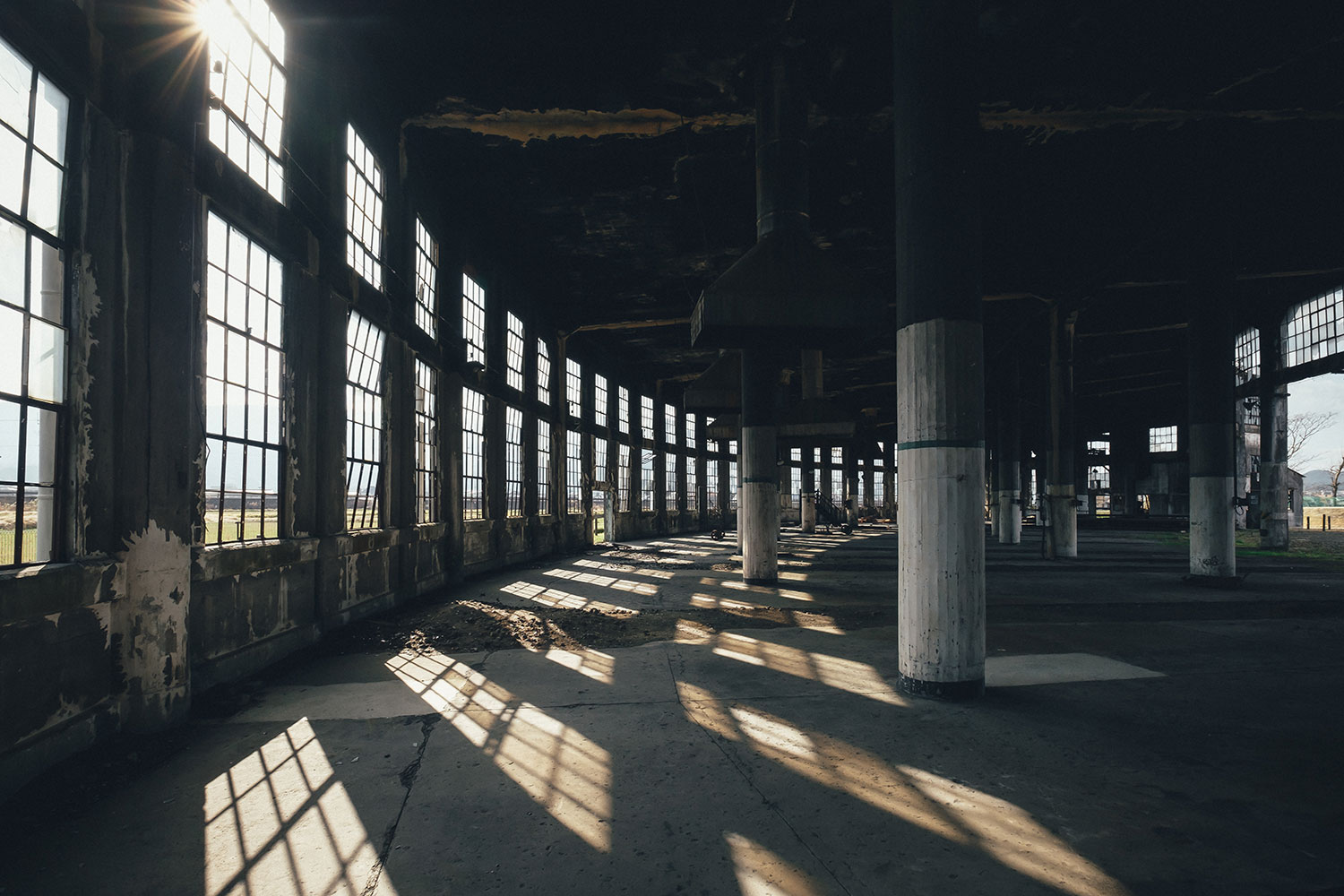
Former Bungo-Mori Roundhouse

Bungo-Mori Roundhouse Park
In Kusu-machi, the fan-shaped roundhouse where locomotives bringing travelers to the area would rest for a time has fulfilled its duty and now quietly marks the passage of time. The roundhouse, which sent off and welcomed in locomotives every day, was struck by machine-gun fire from US armed forces during the war, and innumerable bullet marks now remain on its exterior. The roundhouse still remembers the cheerful appearance and voices of the travelers who came to sightsee in Yabakei even now, and it can now sense the tidings of a new wave of sightseeing.
Kusu’s Mori Castle Town
Shimizu Bakuen (Shimizu Ravine Fall Park)
Kusu’s Mori Castle Town flourished as the entranceway for Yabakei sightseeing. Welcoming travelers and seeing them off again—the townscape, with its rows of 100-year-old buildings, speaks of the scenery which once was. At the end of the Taisho Period, the literary master Tayama Katai (*1) and painter Kosugi Hoan (*2) road in an automobile from Nakatsu to Kusu and were some of the first to journey to the area in this way at the time. The two of them authored the Yabakei Kiko with stories, poems, and illustrations depicting a fulfilling trip. “There are waterfalls and fall leaves deep in the forested valley. Come now, I will show you the way.” Katai invites you on a journey of “Yabakei Sightseeing.”
*1: Tayama Katai – 1872–1930, novelist. In addition to his naturalist works, such as his masterpieces Futon and Inaka Kyoshi, he also considered travel pieces to be one of his strongpoints. In Taisho year 15 (1926), he traveled to Yabakei with Kosugi Hoan and wrote Yabakei Kiko.
*2: Kosugi Hoan – 1881–1964, painter. Also known as Kosugi Misei. His most important works include the wall painting in the Yasuda Auditorium at the University of Tokyo. He visited Yabakei many times and left behind many paintings from those journeys.
Next property
> episode 8 Transmit the Past. Live in the Present.
Other content

